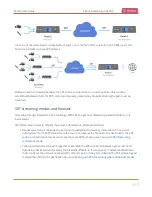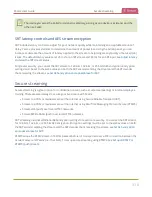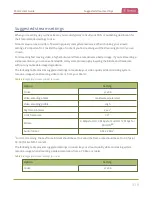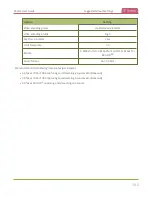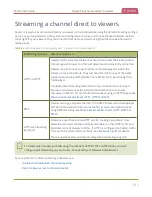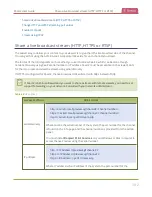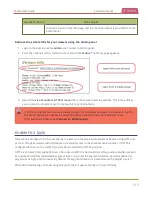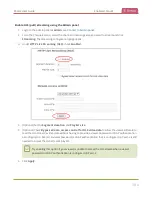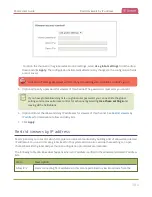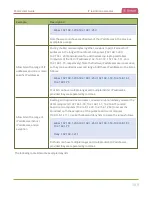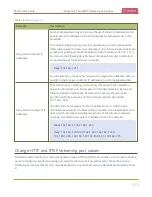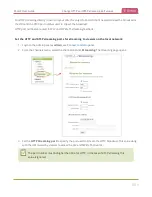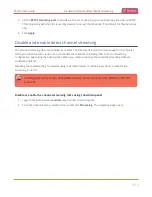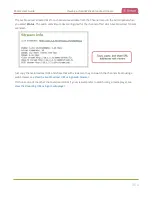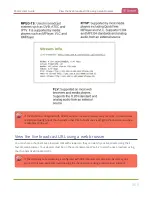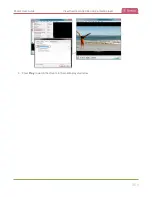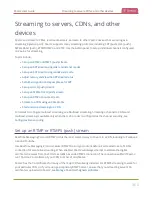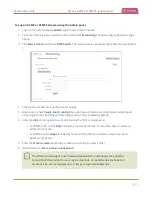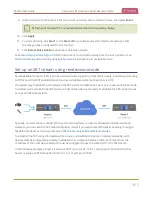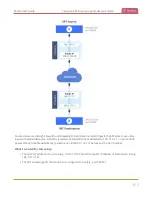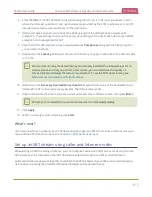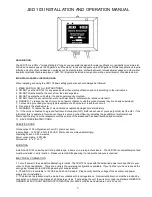
Pearl-2 User Guide
Change HTTP and RTSP streaming port values
Table 59
Example deny lists
Example
Description
Deny list with distinct IP
addresses
Another simple allow/deny list is to use the list of known IP addresses to list
specific denied IP addresses. All other addresses are allowed access to the
broadcast.
For example imagine your system is accessible on your local area network
(LAN) and you want to allow any computer on the LAN can access the stream
except your publicly-accessible boardroom (with IP address 192.168.1.211).
You can use the following deny list (leave the allow list empty) to permit all
computers except the boardroom computer:
Deny: 192.168.1.211
As with allow lists, your deny list can specify a range of IP addresses, and can
specify multiple ranges or distinct IP addresses in a comma-separated list.
Deny list with a range of IP
addresses
Consider a situation where you want every computer on the network to
access the broadcast, with the exception of the CEO’s desktop, laptop and
tablet computers. Additionally, boardroom computers should not be
permitted with the exception of the cafeteria computer (IP address
192.168.1.222).
The deny list is an "exception" list for the allow list. So to craft the rule
described above we need to allow all the computers in the local subnet, then
deny specific sub-ranges including two groups of boardroom computers
ensuring the cafeteria computer's IP address is not in the deny list:
Allow: 192.168.1.1-192.168.1.250
Deny: 192.168.1.200-192.168.1.221, 192.168.1.223-
192.168.1.250, 192.168.1.50-192.168.1.51, 192.168.1.75
Change HTTP and RTSP streaming port values
By default, each channel you create is assigned a unique HTTP and RTSP port number. You can use the Admin
panel to configure a specific streaming port value for the channel. Ensure that each channel has unique
streaming port values that are not currently assigned to any other process, see
.
350


